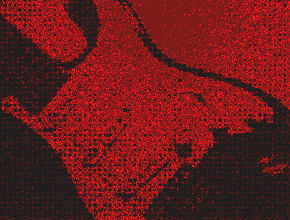I’m thrilled to share my latest publication, a review of the book Making Sense of Recordings: How Cognitive Processing of Recorded Sound Works by Mads Walther-Hansen (Oxford University Press, 2020). This review appears in the open-access music theory journal Intégral vol. 35 (2022).
https://www.esm.rochester.edu/integral/35-2022/hudson/
Below is an excerpt from the review that is especially relevant to metal and heavy rock music. Please click the link above to view my review in full (for free!).
[…]
For example, the cognitive metaphor for “Heavy” overlaps considerably with “Dark,” “Hard,” and “Rough.” While these are not identical metaphors, most instances of “Heavy” arguably also draw on one or more of the other three metaphors. Additionally, in Walther-Hansen’s definitions, these four cognitive metaphors share many overlapping entailments, as I’ve mapped out in Figure 1. For example, “Heavy,” “Hard,” and “Rough” sounds all entail apparent force or effort; “Heavy” and “Dark” sounds are both low in pitch; etc.

Figure 1. Four cognitive metaphors with their overlapping entailments. Top row: cognitive metaphors for sound quality; Bottom row: entailments / characteristics from other domains of experience. Based on Walther-Hansen’s encyclopedia definitions (Chapter 4). Dotted lines represent two additional entailments I added: rough sounds are often literally loud or imply loudness, and heaviness is often associated with badness or evil.
Additionally, a single metaphor like HEAVY operates in the background for a large network of related sound qualities with distinct connotations and associations, which often are not entirely represented within a single definition or term. Figure 2 takes a few of the large number of senses for HEAVY used within the metal genre, grouped into two categories by speed. The Heavy & Fast category is also closely related to another background metaphor, HARD. The broad metaphor of HEAVY could be described as a kind of schema which passes on many entailments (like size, weight, impact, etc.) to each of the more specific senses (such as brutal, thunderous, adrenalized, etc.). But many of these individual senses resonate with other metaphors as well, and those other metaphors could be viewed as schematic for these individual terms. For example, “funereal” could be described as a finer sense of both HEAVY and DARK. This network represents a diverse and multidimensional space of interrelated senses, which cannot be reduced to a single definition for HEAVY; for example, “funereal” and “adrenalized” are practically opposite in meaning, but both are senses of HEAVY which apply this metaphor in divergent ways to create their distinct qualities of physical impact.

[…]
…for the rest of the review, please navigate to Integral’s website at the link above.
